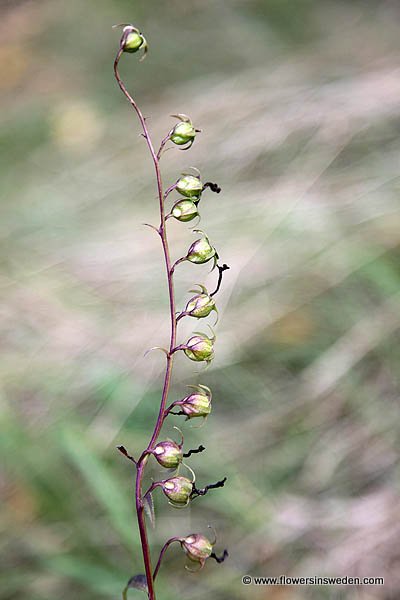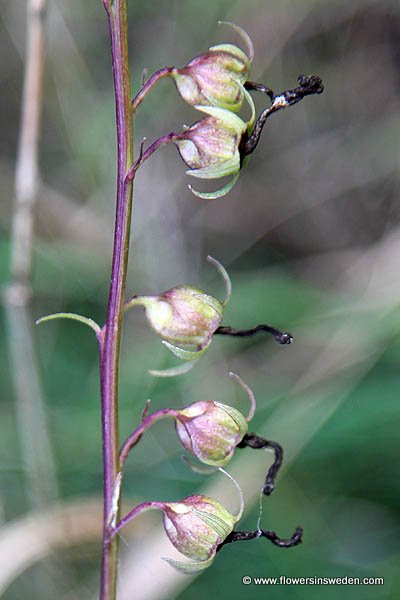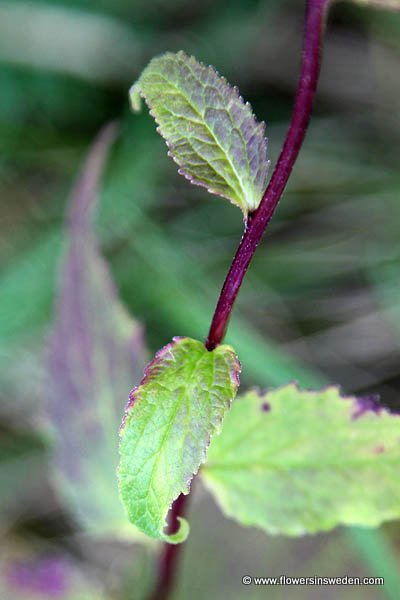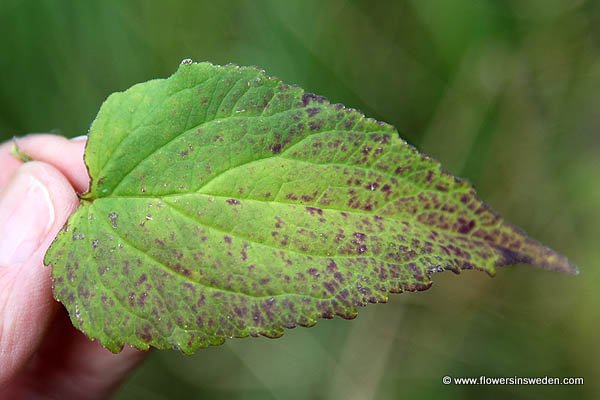
| Scientific name: | Digitalis purpurea L. | |
| Swedish name: | Fingerborgsblomma, vanlig fingerborgsblomma | |
| German name: | Rote Fingerhut, Fingerkraut, Fuchskraut, Schwulstkraut, Unserer-lieben-Frauen-Handschuh, Waldglöckchen, Waldschelle | |
| Nederlandse naam: | Vingerhoedskruid | |
| English name: | Common Foxglove, Purple Foxglove, Lady's Glove | |
| Plant Family: | Plantaginaceae, Plantain family, Grobladsväxter |

|
| Life form: | Herbaceous biennial | |
| Stems: | , simple, gray-tomentose and glandular, especially upward | |
| Leaves: | Rosette, spirally arranged, simple, 10-35 cm long and 5-12 cm broad, and are covered with gray-white pubescent and glandular hairs. | |
| Flowers: | pedicel 6–25 mm, tomentose;many flowers, calyx lobes < 1.8 cm, lanceolate to ovate; corolla 4–6 cm, white to pink-purple with darker spots on lower inside surface, lobes ciliate, sparsely long-hairy inside; stamens, style included. | |
| Flowering Period: | June, July, August | |
| Fruit: | Capsule which splits open at maturity to release the numerous tiny (0.1-0.2 mm) seeds. | |
| Habitat: | Forest, thicket, farmland, settlements |

Derivation of the botanical name: Digitalis, finger like. purpurea,purple.
It is poisonous and contains glycosides, which have been used commercially in the pharmaceutical industry, as the active substance in various cardiac medications. The man credited with the introduction of digitalis into the practice of medicine was William Withering (1741 - 1799). 

|